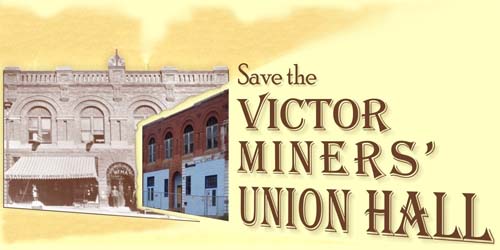 |
Victor
|
The
Pinkerton Labor Spy
by
Morris Friedman

CHAPTER XXIII.
THE PINKERTONS IN CALIFORNIA—CONCLUDED.
DESTRUCTION OF THE UNITED BROTHERHOOD
OF RAILWAY EMPLOYEES.
The Pinkerton Agency did its best to break the strike of the Federation in Colorado, and met with doubtful success. It crushed the strike of the coal miners, and almost totally disrupted District No. 15 of the United Mine Workers. The Agency also signally defeated the strenuous efforts of President Mitchell to establish a local of his order at Rock Springs, Wyoming, and in addition destroyed a local union of the Federation at Keswick, California. However, we venture to assert the Agency will agree with us that its crowning achievement of the last decade was the destruction of the United Brotherhood of Railway Employees.
The railroad brotherhoods hold a commanding position among the great labor orders of this country; but on the whole, their system of organization is rather defective. Imagine the many different departments of a great railroad system working at cross-purposes, and you will have a fair conception of the organization of the railroad men's unions, and will also understand why it was found necessary to wage a war of extermination against the United Brotherhood.
An employee of a railroad generally belongs to one or another of the following unions:
Brotherhood of Locomotive Firemen.
Brotherhood of Railroad Trainmen.
Brotherhood of Railroad Conductors.
Brotherhood of Locomotive Engineers.
Brotherhood of Railroad Switchmen.
International Association of Machinists.
Brotherhood of Boilermakers and Iron Shipbuilders of America.
International Brotherhood of Blacksmiths.
International Association of Car Workers.
Freight Handlers and Warehousemen's International Union of America.
Brotherhood of Railroad Telegraphers.
Each one of the above unions is an independent national organization, and cannot interfere or be interfered with in any matter by any of the other railroad brotherhoods.
This system of organization, in case of a strike, may cause unlooked-for complications. For example:
In 1902 President Horace G. Burt of Harriman's Union Pacific Railroad Company informed his employees of the mechanical department that on a certain date the PIECE-WORK SYSTEM would supplant the old order of things. So very obnoxious was the proposed innovation to the machinists, blacksmiths and boilermakers that they declared a strike on the Union Pacific Railroad.
President Burt insisted that the company had the right to manage their business in their own way, and that under no circumstances would he permit any union to interfere in the company's affairs.
This struggle was a veritable gold mine for the Pinkerton Agency. Supt. J. C. Fraser of the Denver office personally conducted the strike in the interests of the railroad, and for over a year made his headquarters at the Paxton Hotel in Omaha. A corps of operatives were employed in the company's shops at Omaha, Neb.; North Platte, Neb.; Rawlins, Wyo.; Cheyenne, Wyo.; Laramie, Wyo., and Denver, Col., for the alleged purpose of preventing the union mechanics from injuring or destroying company property. These operatives reported to Supt. Fraser at Omaha, and the latter consulted daily with President Burt. The different offices of the Agency were also busy hiring non-union mechanics for the company.
After the strike had lasted for several months, both belligerents were in sore straits, and more than likely had someone brought the contending parties together, a speedy settlement would have resulted. But a settlement would have meant a loss to the Agency. Therefore, the Agency kept on advising President Burt to hold out; that he was bound to win in the end, and that with the help of their operatives the strike would fall of its own weight.
President Burt believed the assurances of the Agency, and would have nothing to say to his striking employees. The railroad company and the unions were losing millions SIMPLY BECAUSE THE PINKERTON AGENCY WANTED TO MAKE THOUSANDS. The reader will have a glimpse of the insatiable greed of the Agency when we state that it charged the railroad a rate of $6 per day and expenses for the services of Supt. Fraser's stenographer, whose regular salary was twelve dollars a week.
Thus the strike dragged on for many months, both sides being sick of the struggle and discouraged at the immense losses they had sustained, with Pinkerton's National Detective Agency the only obstacle in the way of a speedy and satisfactory settlement. The International Association of Machinists finally threatened to call out the mechanics of all the other Harriman railroads, if a settlement was not made.
This threat alarmed E. H. Harriman, who took the matter into his own hands, and agreed to settle the strike by arbitration, over the head of President Burt. This he did. The settlement was to the effect that no mechanic need work under the piece-work system if he did not wish to. Mr. Burt soon resigned his position as president of the railroad, and we feel safe in stating that he gave up his office because his conduct of the strike had been a failure. We further charge that had it not been for the evil counsel of the Agency, the strike would have been settled months earlier at an enormous saving to railroad and unions.
Had Mr. Harriman been as unyielding and uncompromising as President Burt, it is more than probable that the mechanics of all the Harriman lines would have been called out on a sympathetic strike. Such an event would have extended the area of disturbance over a number of States, and would have caused incalculable loss to the railroads and the mechanics.
From the preceding it can be readily seen that the weakness of the mechanics lay in the fact that they stood alone against the united and perfectly organized railroad corporation. Had all other railroad brotherhoods stood by the mechanics, President Burt would have been willing enough to arbitrate. But the other brotherhoods did not support the mechanics, and a two-year struggle was the result.
A resident of San Francisco, George Estes by name, recognized the principle that LABOR, AS ORGANIZED AT THE PRESENT TIME, IS ORGANIZED AGAINST ITSELF, AND CANNOT HOPE TO COPE ON A FOOTING OF EQUALITY WITH SOLIDLY ORGANIZED MONOPOLY. Mr. Estes contended that since capital, irrespective of the nature of its business, was always ready to combine with capital in order to present a united front to labor—so LABOR, REGARDLESS OF TRADE OR OCCUPATION, SHOULD UNITE AND CO-OPERATE WITH LABOR, IN ORDER TO PRESENT A SOLID AND INVINCIBLE FRONT TO CAPITAL.
Mr. Estes undertook to demonstrate the truth of his theory by calling into existence the United Brotherhood of Railway Employees.
This union particularly affected the Southern Pacific Railroad, one of the Harriman lines. Every employee of this road, regardless of calling, was invited to become a member, and hundreds responded to the call, so that in a short time a number of strong local unions were established in different cities of California. The order was especially strong in Sacramento, the local union in that city having a membership of over seven hundred.
The Southern Pacific Railroad regarded the new brotherhood with suspicion and fear. They realized that an organization of this kind could tie up the entire road in an hour if any demands it might make were not properly considered; and the prospect of such a thing was heart-rending to the railroad officials. They commissioned the Pinkerton Agency to do its best to disrupt and destroy this dangerous union.
The Agency, nothing loth, took up the matter, and detailed a machinist operative to work as a mechanic in the Southern Pacific shops at Sacramento. Soon the operative became a member of the United Brotherhood of Railway Employees, and directly began to hammer away at that union.
The way the operative went about his work was peculiar, but effective. He did not attempt to belittle the power of the organization, or to insinuate that the basic principles of the newly-founded brotherhood were not good and sound. What he did do was to befoul and defame the character of President Estes. He privately told a number of the members that George Estes was an adventurer who had founded the order for his own personal benefit; that he was a thief, a robber, a traitor, and God knows what not.
This talk was repeated and believed, and before long the powerful Sacramento lodge became a shadow of its former self. The members nearly all resigned, because they believed the slanderous rumors about President Estes. The decline and fall of the Sacramento lodge brought about the gradual decadence of the order, and within about one year after it had been launched, the United Brotherhood of Railway Employees had ceased to be an important factor in the industrial world.
One curious phase of the work of the Agency in this case was that, while they were busy fighting the different railroad orders on the Union Pacific system, they were intriguing through their operative at Sacramento to induce the members of the United Brotherhood to leave it and join the International Association of Machinists, or some other old, long-established railroad trades union.
It is unnecessary to say that the actions of the Pinkerton operative at Sacramento were strictly in accord with the instructions given him by Division Manager James McParland and General Supt. B. F. Kemble of the San Francisco and Los Angeles offices.
Chapter XXIV. What The Pinkerton Agency Claims To Be—A Financial Statement.